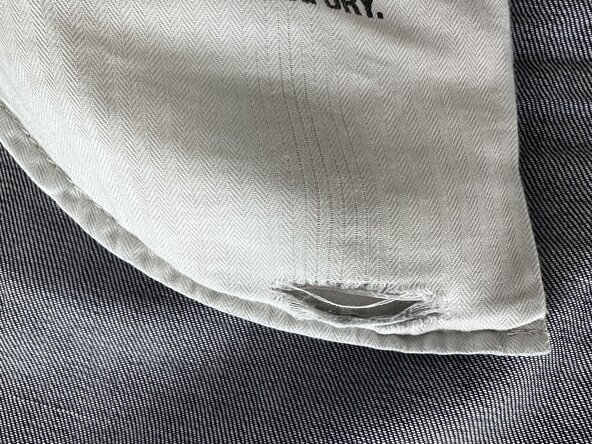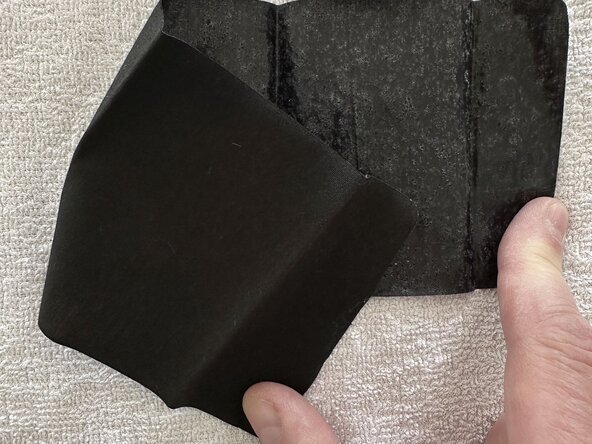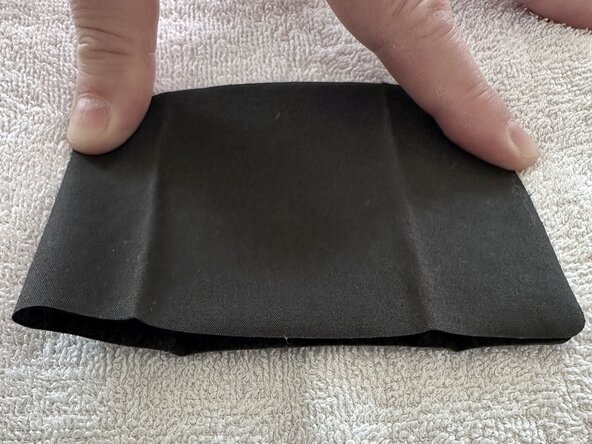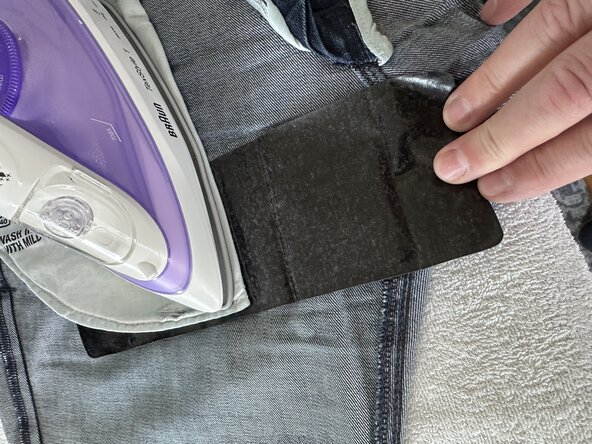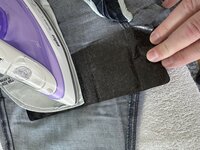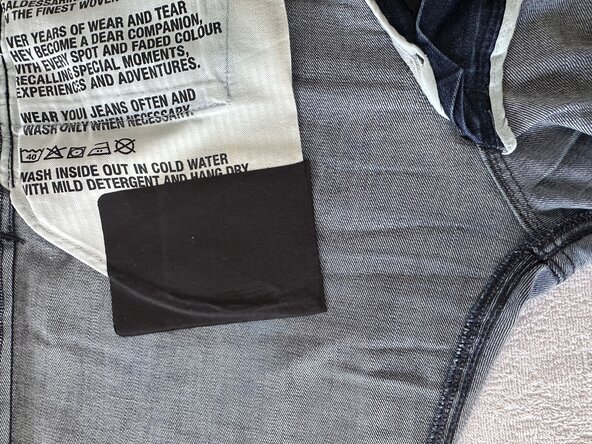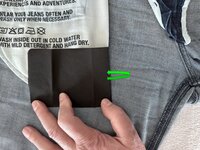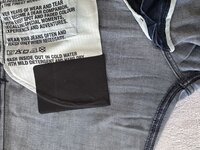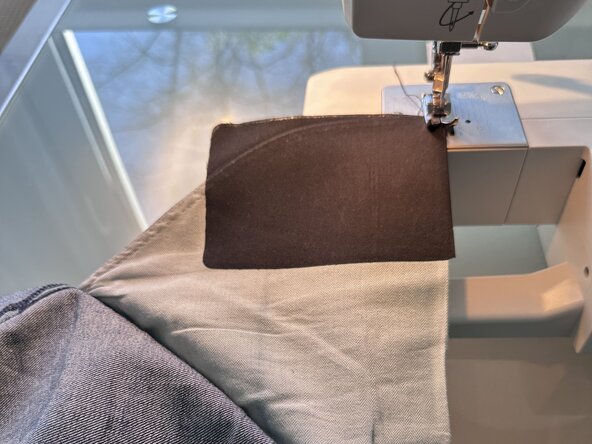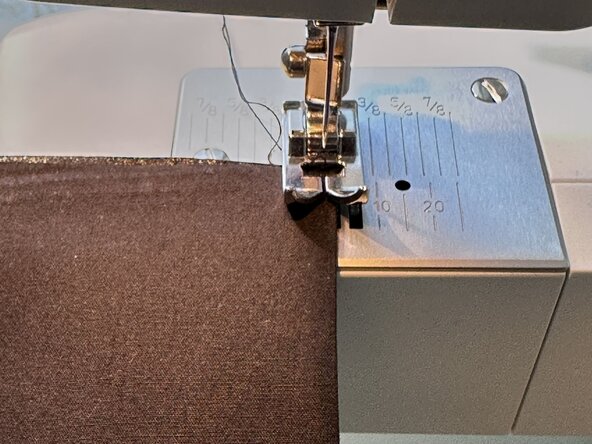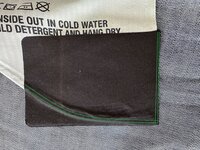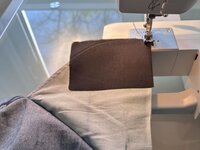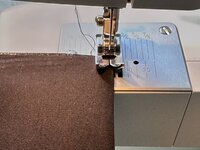crwdns2915892:0crwdne2915892:0
To repair a hole or tear on the edge of trouser pocket the following instructions were created: How to Fix a Hole in a Pant Pocket.
If the hole is a little further away from the edge, if the tear is already larger or if the fabric of the pocket threatens to tear further even after repair the following procedure may offer an alternative. This not only closes the hole, but also reinforces the entire trouser pocket, so that even heavier items such as a mobile phone can be carried in the trouser pocket.
Almost all sewing tasks can be performed by sewing machine or by hand. For the final optional step, the use of a sewing machine depends on whether or not the trouser pocket can be pulled over the machine's extension table or needle plate.
crwdns2942213:0crwdne2942213:0
-
-
Turn the trousers inside out and place them taut and flat on an ironing board.
-
-
-
Bring the patch into the right shape by folding it in half so that you can place it around your trouser pocket as desired.
-
-
-
Place the patch fabric between your trouser leg and pocket. The side of the patch with the iron-on patch facing the pocket.
-
Position the patch so that one half of the patch is under the trouser pocket and the other half is free next to it.
-
Iron the part of the patch under the pocket firmly to the back of the pocket by pressing the iron onto the pocket and the patch underneath.
-
-
-
-
Now fold the free half of the patch over the trouser pocket so that it lies flush with the other half. The trouser pocket itself is now sandwiched between the two patch halves.
-
Now iron the patch onto the front of the pocket, applying sufficient pressure.
-
Tip: If necessary, iron the separately stretched out trouser pocket again from the other side so that the patch adheres properly to both sides of the trouser pocket.
-
-
-
Now sew the patch to the pocket. Follow the contour of the pocket, but let the seam run within the contour so that the patch is connected to the pocket.
-
Use a stitch that ensures a good and strong connection between the pocket and the patch fabric.
-
-
-
In order to firmly connect the patch and the trouser pocket, a second, slightly offset seam may be useful.
-
-
-
Cut off any excess fabric outside the pocket contour with scissors.
-
-
-
Finally, sew the edge of the cut edge with an appropriate stitch (e.g. overlock stitch) to prevent the patch from fraying in the future and to achieve a visually attractive finish to the sewing work.
-
-
-
To further improve the stability and strength of the trouser pocket, you can sew the surface of the trouser pocket to the surface of the patch - on the front and back side of the pocket.
-
Note: Instead of an ironing board, you can also use a table with a hand towel or bath towel on top.
crwdns2934873:0crwdne2934873:0
100%
crwdns2934885:0crwdne2934885:0 crwdns2934875:0crwdne2934875:0
crwdns2934877:0crwdne2934877:0 ›

